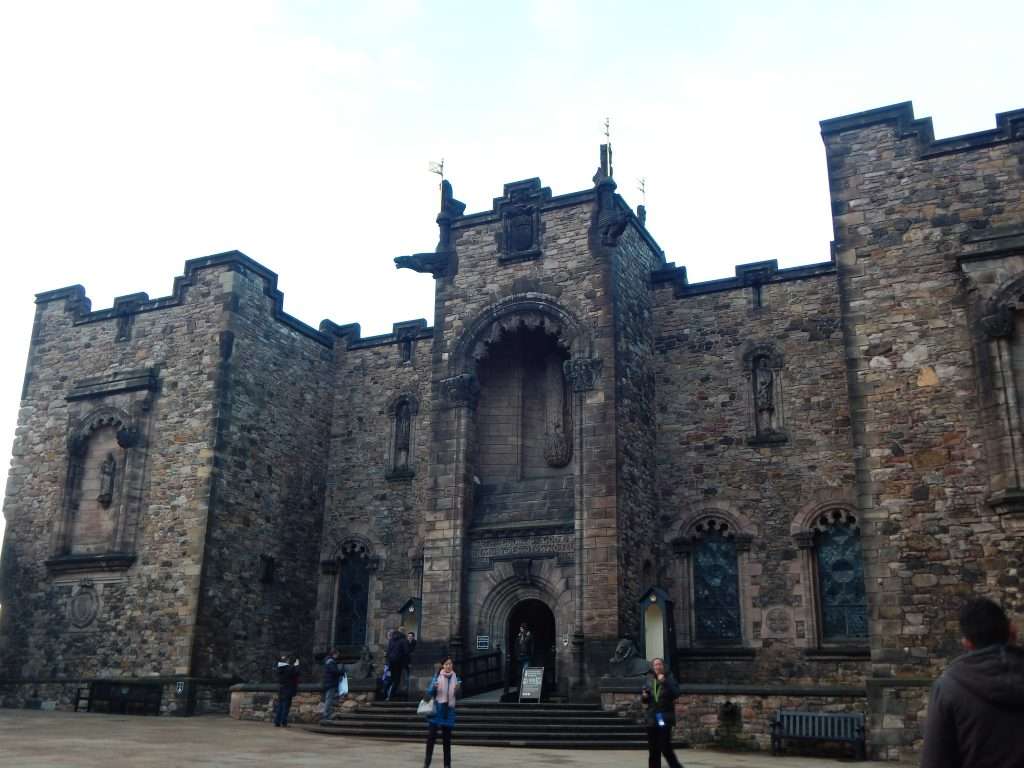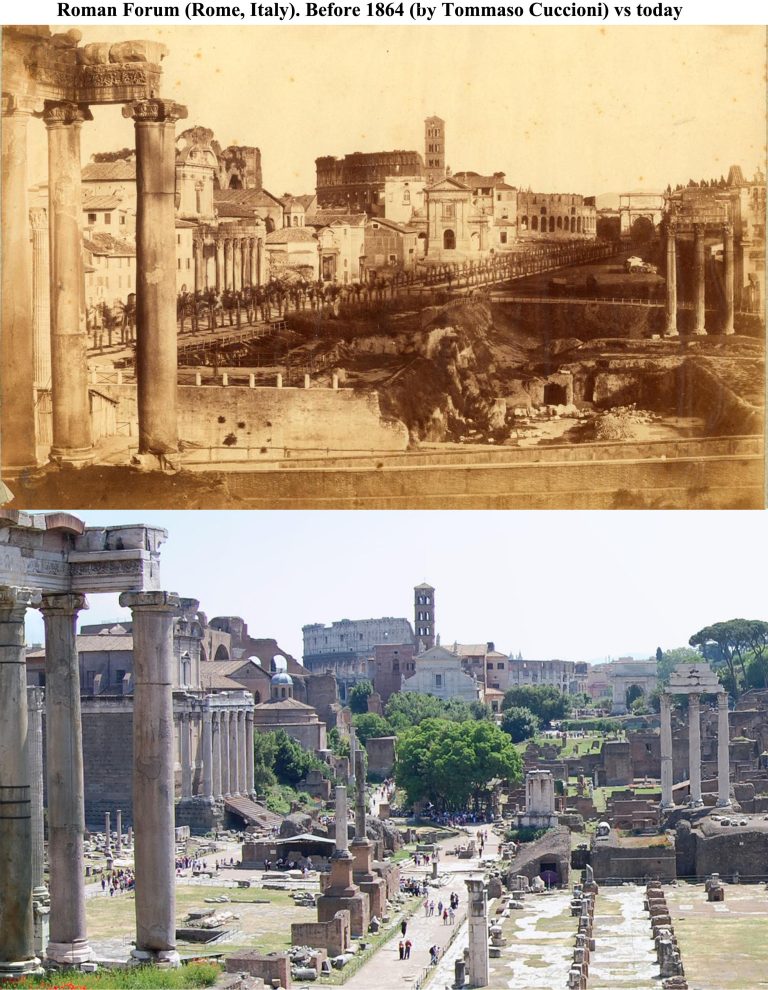Visiting the Edinburgh Castle: Things you can’t miss
The most iconic symbol of Edinburgh. Sitting on a volcanic rock known as Castle Rock, the Edinburgh Castle oversees the whole city and can be seen from pretty much anywhere.
Accordingly to researchers, Castle Rock has been occupied by humans since the Iron Age, but it’s been used as a Royal location since at least the reign of David I in the 12th century being used by the royal family until 1633.
During its 1100 years of history, the castle has suffered 26 sieges, giving it the title of the most besieged place in Great Britain and one of the most attacked in the world.
Nowadays, without invasions and campaigns, the Edinburgh Castle can just lay on the top of the rock and watch as the city grows around it.
The visit to Edinburgh Castle is perfect even for those spending a short time in Edinburgh. If you wish to see every spot inside the castle, it will take around 3 hours. From the castle, you also get a beautiful view of the city and its surroundings. You can reach the castle by foot, following through the Royal Mile.

Visiting the Edinburgh Castle: Things you can’t miss
Historical Highlights
During the Wars of Scottish Independence, Edinburgh Castle was constantly contested by Scots and English, until it was finally conquered by Sir William Douglas in 1341.
Around 1560, the Castle became the home of Mary, Queen of Scots, who was then expecting her first and only child, the future King James IV. Queen Mary was later defeated and beheaded by her cousin, Queen Elizabeth I of England.
In 1650, Edinburgh was occupied by Oliver Crownwell during the English Civil War and the Edinburgh Castle was captured by Oliver’s troops.
In 1688 King James VII was overthrown in what became known as the Glorious Revolution. As a Catholic himself, James thought that could re-establish Catholicism as the official religion of the British Isles. Edinburgh Castle’s garrison supported James which resulted in the castle being besieged by Government Forces and later seized in 1689. The series of uprisings is known as Jacobite Rising. Another attempt to seize the castle was made in 1715 but failed.
Main Areas
One o’clock gun
Staying in Edinburgh you will probably hear it every single day. Since 1861, a gun located in the Edinburgh castle is fired every day at 1 pm except on Sundays, Christmas Day and Good Friday. It is quite an event for the city and a crowd always gathers to watch the spectacle.
National War Museum
Opened in 1933, that’s the perfect place if you want to learn more about the 400 years of war that Scotland has seen. The museum has from letters to Highland broadswords and warfare suits.

St Margaret’s Chapel
The oldest building in Edinburgh and probably the oldest in the whole of Scotland. It was built in 1130 by David I, dedicated to his mother Queen Margaret, canonized by Pope Innocent IV in 1250.
Mons Meg
The huge canon located next to the St Margaret’s Chapel, back to when it was created, Mons Meg was considered the top example of military technology. It was capable of blasting a 150kg gunstone for 3.2 km. She was used in many battles, in different locations and was finally retired in 1550.

Scottish National Memorial of War
Originally the site of the Church of St Mary that was turned into a munition store in 1530 and demolished in 1755, the building houses nowadays a memorial in honor of those killed during the World Wars and the Military Campaigns since 1945.

Royal Palace
There it is, the royal palace, the official house of the royal family. It was in these rooms and between these walls that important figures like Robert, the Bruce, James IV and Mary Queen of Scots lived.
Nowadays the building houses an interesting exhibition that tells the story of the Honours of Scotland. It is also possible to visit the room where Mary Queen of Scots lived and gave birth to her only son, James VI, the room became known as the birth chamber and is a highlight for those visiting the castle.

The Great Hall
The well preserved and decored room was finally completed in 1511 for James IV. The highlight of the room is its huge fireplace. There are also old armors displayed in this room.

War Prisons
This is one of my favorite parts of the castle. During the history, the War Prison has seen more than 1,000 prisoners of different nationality and during different wars and campaigns.
The first prisoners held here were French privateers captured in 1758. But the most notorious were the 21 pirates from the Caribbean who were hanged after and the five-years-old drummer boy captured at the Battle of Trafalgar in 1805, legend says that his ghost can still be seen.
Nowadays the prison was recreated with visual and sonic effects, the exhibition is really remarkable and realistic and gives you a good idea of how the last days were for those who were left forgotten here.

Honors of Scotland
The Honours of Scotland were first used together in the coronation of Queen Mary of Scots in 1543. During the English Civil War, they were removed from the castle and hidden from Oliver Crownwell until 1560. In 1707 the Crown Jewels were then locked in a chest and hidden once again after the Treaty of Union between England and Scotland to be discovered only 111 years after, in 1818 by the novelist Sir Walter Scott.
All the items, including the chest, can be seen in a very impressive exhibition in the Crown Room, inside the Royal Palace.
The exhibitions counts with real size dolls, visual and sonorous effects that tell the history of the city of Edinburgh, the kings and the Crown Jewels in a very visual and catching way. It is great if you want to have an idea of how life used to be in medieval Edinburgh.
The Stone of Destiny
This stone has been used since the first kings of Scotland. The traditional rules that the kings must be crowned during an outdoor ceremony when he would have to sit on this stone that symbolizes the unification of the monarch, the land, and the people. The stone was once stolen by king Eduard I of England and kept in the Westminster Abbey, but in 1996 was handed back to Scotland after more than 700 years.
The Crown Jewels
Displayed in the Crown Room, it consists in the crown, sword, and scepter. Both the sword and the scepter were given to James IV by the pope. While the actual crown was first used in the coronation of Queen Mary. It is said that the gold used in the actual crown is the one used to forge Robert, Bruce’s crown. King Robert’s crown was then re-fashioned by James V, Queen Mary’s father.
For more information about the Edinburgh Castle and Scottish History

English Civil War: A History From Beginning to End (click here to buy)
In 1642, King Charles I and the elected Parliament of England went to war over the future of the Stuart kingdom. Over the next nine years three Civil Wars would be fought, devastating the populations of England, Scotland and Ireland and claiming a death toll of an estimated 800,000 people, including King Charles I himself.

Queen of Scots: The True Life of Mary Stuart (click here to buy)
In the first full-scale biography of Mary Stuart in more than thirty years, John Guy creates an intimate and absorbing portrait of one of history’s greatest women, depicting her world and her place in the sweep of history with stunning immediacy. Bringing together all surviving documents and uncovering a trove of new sources for the first time, Guy dispels the popular image of Mary Queen of Scots as a romantic leading lady — achieving her ends through feminine wiles — and establishes her as the intellectual and political equal of Elizabeth I.

Outlander (click here to buy)
#1 NEW YORK TIMES BESTSELLER • NOW A STARZ ORIGINAL SERIES
Unrivaled storytelling. Unforgettable characters. Rich historical detail. These are the hallmarks of Diana Gabaldon’s work. Her New York Times bestselling Outlander novels have earned the praise of critics and captured the hearts of millions of fans. Here is the story that started it all, introducing two remarkable characters, Claire Beauchamp Randall and Jamie Fraser, in a spellbinding novel of passion and history that combines exhilarating adventure with a love story for the ages.






I wish to go to Scotland too. Thanks for your tips.
Veronika
https://brunettefromwallstreet.com
Wow. I’ve always wanted to go to Scotland and this post has made me want to go even more. You could easily get lost in these images. Great job.
Thank you Rik! 😀